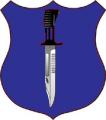
Originally Posted by
jcustis

At the level of the individual Marine or Soldier, conducting a foot patrol or similar offensive movement in a small war, there aren't to many weight savings to achieve, from what I have thought of. There are certainly ways to have troops hot rack sleeping bags or forego carrying an entire sleep system if the weather is temperate, but that's typically not a tough nut to crack because we have so many vehicles to move us about the battlespace and from COP to COP, when we get in the rut of commuting to work. Having said that, every ounce counts, and I think I posted a few thoughts on this topic in another thread:
-For starters, not every Marine needs to carry the exact same load during every mission. For example, does every rifleman need an entrenching tool when 1/2 should be posting security as the digging commences? This is a deliberate planning process that requires not only leadership, but someone who can be a critical thinker in terms of what is actually required. We've gotten dumb over the years and gone away from good mission planning at the small unit level. Remember the warnord format with special equipment and equipment common to all?
-Not everyone needs to carry the same ammunition loadout. Corpsmen may be carrying rifles for their T/E weapon nowadays, but do they really need a full 210 rounds? Maybe he could carry more IV bags, or a portion of some other Marine's water supply.
-We are issued water filtration systems to attach to our issued hydration bladders, and maybe some units do use them, but I suspect it's often as an in-extremis measure only. Taking their use seriously and planning for it can cut down on a margin of weight.
-As we strive to make webbing more durable, we invariably increase the weight. Again, it's just a few ounces we are dealing with, but it adds up. It would be nice to have a lighter piece of equipment like a chest rig harness, and know that if it becomes unserviceable, I won't have to go through a lot of drama with a damaged gear statement in order to get a replacement.
-Our IFAKs are too big for what we need them for, and most troops will plod along with that paperweight hanging on their belt until someone who thinks about the problem tells them to modify things. I'm likely in violation of the strict letter of the law with even my own unit's SOP, but I don't need both a boo-boo pack and a trauma pack on my person. I can get band-aids, tylenol, neosporin from the corpsman, so I don't carry that out on foot movements.
-We probably carry too much ammunition as a whole, considering the other assets that are around to support us. Foot patrolling in the Korengal? You probably need all you can carry. Conducting census operations in southern Helmand, with a section of MRAPs in support of your squad (rein) patrol? Perhaps some of your ammo can be left in an assault bag in the truck.










 (Fuller even wrote a
(Fuller even wrote a  . Indeed, it’s interesting how many post WWI military types got sucked into the mysticism of the times and such like (i.e., Ludendorff). Anyway, having been informed about the post WWI rifle platoon by yourself I have to say that I have been given a new spin on the doctrinal imbroglio of the time as well as the fact that Fuller, for all his other(worldy?) insight into realms military and strategic (and we can disagree on that), doesn’t seem to have grasped the infantry or small unit aspect of it very well. Still, I like him (is there a “byzantine” personality type?) and at least he’s easier to read than the Prophet Naveh!
. Indeed, it’s interesting how many post WWI military types got sucked into the mysticism of the times and such like (i.e., Ludendorff). Anyway, having been informed about the post WWI rifle platoon by yourself I have to say that I have been given a new spin on the doctrinal imbroglio of the time as well as the fact that Fuller, for all his other(worldy?) insight into realms military and strategic (and we can disagree on that), doesn’t seem to have grasped the infantry or small unit aspect of it very well. Still, I like him (is there a “byzantine” personality type?) and at least he’s easier to read than the Prophet Naveh!




Bookmarks